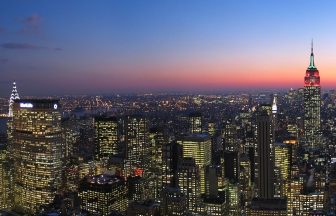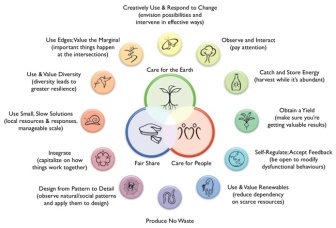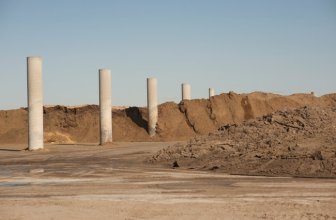I’m currently in a rural area of Paraguay. Most people in my community practice subsistence agriculture using hand-tools. Moving here after living in (sub)urban areas of the United States all my life has allowed me some perspective on the ways in which humans interact with their natural environment. Since my job involves promoting sustainable, small-scale agriculture I’ve had a lot of time and context to think about these interactions particularly as they relate to agricultural use of lands, so there’s a particular degree of focus in that area I’ll be exploring in future essays on this blog. For this post, however, I’ve taken a more general approach and divided the historical stages of interactions between humans and their natural environments into five parts:
Stage 1. Immersed in / as a component of nature (e.g. hunter-gatherer). Usually small scale modification of the environment on a local level. Concept of nature as an “other” not yet formed. Resources procured from the environment but not reproduced.

Indigenous hunter-gatherer peoples in places like Brazil are currently being displaced from their Stage 1 jungle homes by the arrival of large-scale industrial agriculture, a jump to Stages 3 and 4. Credit: CNN
Stage 2. Harnessing, displacing but still in tandem with nature (e.g. early subsistence agrarian societies with primitive tools). Not all view the rise of a sedentary culture in the form of agrarian civilization around 12,000 years ago as a positive evolution.
Stage 3. Supplanting, creating new systems enhancing existing natural forms but absorbing their processes, such as energy, nutrients, and water cycles (e.g. early industrial development, semi-mechanized agriculture). Grand projects are built such as dams and irrigation, monuments to human achievement. Agrarian society still holds a presence even as cities rise, but it features less connection between man and land as machines form an intermediary, and monocultures are imposed upon the land.
Stage 4. Sanitizing, great modification of environment. Displacement of existing processes. Polarization between man-made and natural. The urban-industrial epoch, think post-World War II United States. Artificial posing as nature, e.g. suburban landscapes, and typification of what constitutes “natural,” e.g. processed foods. Packaged, e.g. people living mostly indoors in distinctly unnatural environment. New York City is an example of a heavily modified urban environment, though its dense population allows not only for less per capita land use but lessened usage of other resources like water, making New York the most sustainable city in America, showing how the transition to sustainability doesn’t necessarily mean relinquishing the constructed development of Stage 4.

The Manhattan skyline. Today a concrete jungle, it’s hard to imagine it as a series of marshes and woodlands, though the Mannahatta project attempts to do so.
—> Stage 5. Mimicking for sustainable processes working in conjunction with nature (e.g. permaculture, harnessing sustainable resources).
I believe that we are currently in the process of achieving this epoch, involving adapting to work with the environment instead of against it, taking into account resource limits and suitability of land, etc. to perform different functions.
Stage 5 is somewhat comprable to the recent stage of evolution in human-wilderness relations, a realizing of coexistence and appreciation of the essentiality of sustainable resource use for human survival, where the natural environment can be preserved through societal action, and idealized on an intellectual level, as opposed to the first two stages:
Epochs of Human-Wilderness Relations
1. Fear of unknown, wilderness perceived as useless
2. Land conquered for resources, still viewed as “other” (lines up with steps 2-4 of human-nature relations)
3. Wilderness preserved, idealized (e.g. national parks — see my earlier post on reckoning with this definition of wilderness)

Even in step 3. of human-wilderness relations, manifested in efforts such as the preservation of Yosemite National Park, a literal thirst for resources was manifested: here is the juxtaposition of O’Shaughnessy Dam and the Hetch Hetchy reservoir with their otherwise preserved surroundings.
Attitudes and Outlooks
Today, particularly in the industrialized world, there is a much greater degree of awe at human technologies than the natural world. Personally I think the fact that you can grow a large, fruit-bearing plant from a tiny seed is a lot more amazing than the manufacturing of a cell phone in a Chinese factory, but judging by media furor over the former every time a new iPhone is introduced it’s reasonable to suspect contemporary Western society values human constructions more than organic processes. I’m as awed as the next guy about smart phones, airplanes, and skyscrapers, but I do think in order to evoke a mindset more in line with sustainable thinking we need to no longer take for granted the organic processes that biologically sustain us. And of course there are people who marvel at both the skyline of Manhattan and the sublime chasm of Yosemite Valley — appreciation of natural vs. human manufactured creations aren’t mutually exclusive — but a greater sensitivitiy towards the appreciation of our biological background is a necessary step in achieving Stage 5. When society at large shifts from venerating manmade luxuries to appreciating the natural forces that make our very existence possible, or even converts some energy towards such a goal, a wider paradigm shift towards sustainability can take hold. An attitude shift reflected in changing ideals as well as the background knowledge required for such a change to manifest itself is an essential precursor to realizing sustainability in actuality.
Embracing the Next Stage (#5): Sustainability
This stage of technological development, assuming current resource demands, requires not only an attitude shift but greater collaboration through government, non-government organization action, private companies, and individual citizens and consumers. It can be made possible through education and coordinated action such as greater foresight in planning and design (think land use planning, new energy technologies) and protective regulations (think pollution limits, toxic chemical bans). Examples of embracing this next stage in human-nature relations include rethinking ways of using what could formerly be thought of as waste products for resources, such as the harnessing of cattle manure for biofuels.


